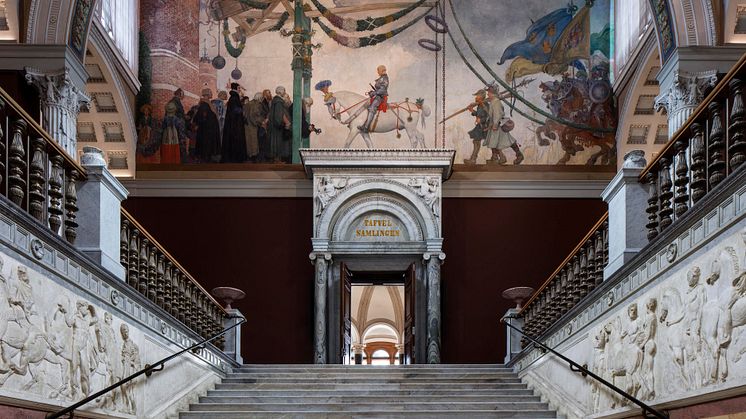
Press release -
Nationalmuseum remains closed until further notice and changes upcoming exhibition programme
On 20 March Nationalmuseum, together with most central museums, temporarily closed down activities in the museum building due to the situation with the new coronavirus. This closure is now valid until further notice, and the museum is working on different scenarios for when it might be possible to reopen. This means that some adjustments have had to be made in the upcoming exhibition programme. The exhibition Zorn – a Swedish superstar, which was scheduled to open this summer, has been postponed until 18 February 2021. Snow Crash, which was due to go on show this autumn, is also postponed until next year. The exhibition Pär Engsheden’s and Sara Danius’s Nobel gowns will be in place when the museum reopens and will remain on show until 21 February next year. Arcadia – a paradise lost will open on 1 October as planned.
“All museums all around the world are having to make major changes regarding scheduled exhibitions from now on. Nationalmuseum is no exception. By postponing these exhibitions until a later date, we want to make sure that visitors have the opportunity to come and see them with joy – and to feel safe. In the meantime, we’re increasing our digital presence to make the collections available to everyone,” says Susanna Pettersson, Director General at Nationalmuseum.
Nationalmuseum Jamtli is still able to be open and the exhibition From dawn til dusk is therefore extended until 24 May. This means that the upcoming exhibition 18th century – Sweden and Europe is postponed slightly and according to the current plan will open on 18 June.
The exhibitions Migrants at Gripsholm Castle and Handle with care – fragile, volatile, perishable at Läckö Castle will be installed as planned and will go on show when the castles reopen.
The reopening of Gustavsberg Porcelain Museum is still scheduled for 6 June, but this depends on what the recommendations for opening the venue are at that time.
While the museum building is closed, work is continuing to convey information and knowledge about the collections digitally through the museum’s social media accounts and on the website. Specially produced material featuring works of art to look at together with children, ABC with Nationalmuseum, ask a curator and various films are just a few examples of how it is still possible to access the collections. There is also Nationalmuseum’s extensive database of artefacts, image archive and the Nationalmuseum Visitor Guide App, where you can follow art from the 16th century until the present day.
https://www.facebook.com/nationalmuseumswe/
https://www.instagram.com/nationalmuseumswe/
For more information
Hanna Tottmar, Head of Press, press@nationalmuseum.se, +46 (0)8-5195 4400
Categories
Nationalmuseum is Sweden’s museum of art and design. The collections include paintings, sculpture, drawings and graphic art from the 16th century up to the beginning of the 20th century and the collection of applied art and design up to the present day. The museum building closed for renovation in 2013 and reopened in autumn 2018. During 2019 the museum had almost 850 000 visits.

